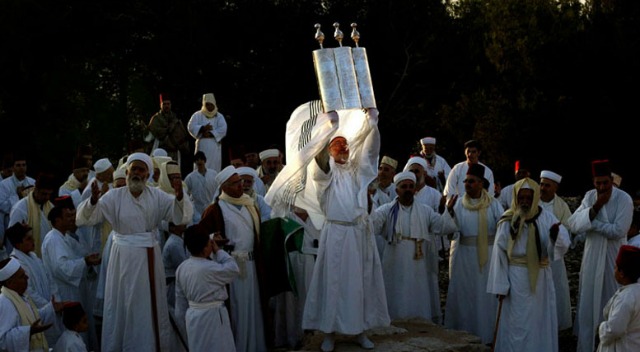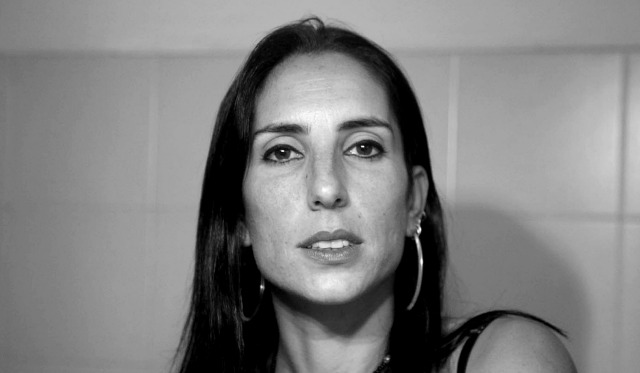Snapping pictures of people practicing centuries-old faith traditions in her native Jerusalem makes award-winning Israeli photojournalist Gali Tibbon feel like a time traveler.
“Every stone you step on has so much history, and if you have imagination your brain can fly,” Tibbon tells ISRAEL21c after returning from London with the title of Sony World Photography Awards Travel Photographer of the Year.
Spread the Word
• Email this article to friends or colleagues
• Share this article on Facebook or Twitter
• Write about and link to this article on your blog
• Local relevancy? Send this article to your local press
Her winning series, “Journey to Jerusalem of Africa – Lalibela, Ethiopia,” resulted from conversations with Ethiopian pilgrims and priests walking those history-soaked stones in Israel’s capital city.
Tibbon learned that in the 12th century, Muslim rulers banned pilgrims from Jerusalem. So the Ethiopian Orthodox Christians, one of the oldest Christian sects, built their own local version of the holy city.
Every year on Christmas, pilgrims still gather in the 11 churches of “Black Jerusalem” that were carved out of monolithic rock during the 25-year reign of King Lalibela – “with, as legend has it, more than a little help from the angels.”
Tibbon documented the pilgrimage over four trips to Lalibela, which takes two and a half days to reach by car from the airport in Addis Ababa.
“Lalibela was soul photography for me,” she says.
The tiny highlands village annually hosts between 30,000 and 60,000 pilgrims. Some people had trekked for 45 days, carrying only walking sticks and sacks of grain and basic garments.
“They walk and meet others, camp out at night and continue walking by day to make it on time for the pilgrimage. It was almost biblical,” says Tibbon.
Her other internationally published and exhibited images include baptism in the Jordan River, Christian rituals in Jerusalem and Samaritan rites on the biblical Mount Gerizim.
She has been featured in the documentaries “Beyond Assignment” and “Mirrors of War” (“Trompe l’oeil”), having covered violent clashes, bombings, funerals and demonstrations in the course of her career.
“Photojournalism may seem very glamorous, but at the end of the day there is a lot of politics and handshaking,” she says. “So I always try to have a project of my own that I am passionate about. That balances my life.”
Coming with good will
Born in 1973, Tibbon was 14 when she came across LIFE magazine’s 1956 The Year in Pictures in the library of her late grandfather, Shabtai Negbi.
“He was a deputy mayor in Jerusalem and an engineer and a frustrated photographer,” she relates. “He had great books of classic photography. I remember seeing those incredible grainy black-and-white pictures. I didn’t know a camera could do that.”
In a photography course at the Israel Museum, she learned how to process and print film in a darkroom. Before long, the ninth-grader had acquired print paper, chemicals and film for her first camera, a Canon AL1 that she still owns.
Living near the prime minister’s residence gave Tibbon plenty of opportunity to try out her future trade. “There were always demonstrations there, with police blocking the road. Most people would turn away, but I had the opposite instinct to go and figure out what was going on,” says Tibbon.
“Photojournalism is like having a front-row seat in history. It’s not just a personal experience. I want to document and transmit it all.”
She studied for three years at the Jerusalem School of Photography, and was accepted among thousands of applicants to the Eddie Adams photography workshop in New York City.
There was no question she would return to Jerusalem.
“Jerusalem is not only a center of political tension; it’s the cradle of faith for three religions, and I spend a lot of time in the Old City.” She lives with her photographer partner just 20 minutes away by foot.
However, she constantly travels to catch the action in far-flung locales — an Orthodox Christian pilgrimage in Poland, a Gypsy pilgrimage in Southern France and Kumbh Mela in India, where about 80 million Hindu pilgrims gather over 55 days in the largest peaceful gathering on earth.
“Journey to Jerusalem of Africa – Lalibela, Ethiopia” was chosen for the Sony award from 122,000 submissions from 170 countries, a testament to Tibbon’s exceptional skill.
A daily swimmer, avid dancer and sometime half-marathon runner, Tibbon says she had no trouble communicating with her easygoing Ethiopian subjects in word and gesture.
“Amharic is a Semitic language, and many verbs and nouns are similar to Hebrew,” she explains. “I am also one of those people who has the ability to communicate without language. When you come with good will, people can sense it.”






















